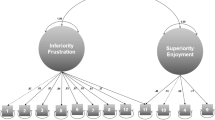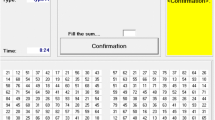Abstract
The relationship between a subject's sex and his or her behavior in a competitive situation was examined. Male and female subjects completed three tasks, first by themselves and then against either a male or female competitor. A 2×2 design (sex of the subject × sex of the competitor) was thereby created. The dependent measures were the subject's performance and his or her heart rate during each task. Since the relationship between a subject's sex and competitive behavior was expected to be situationally specific, three different kinds of tasks were used: anagram, perceptual-motor, and arithmetical. Results were not consistent with predictions based on Horner's “fear of success” model (1968). Competition with either sex was found to increase performance level in both sexes on all three tasks. The only sex-related effect found to be consistent across tasks was that both male and female subjects had a greater increase in heart rate when competing against a male than when competing against a female. This heart rate increase was interpreted as an indicator of increased anxiety or arousal.
Similar content being viewed by others
References
Elliott, R. The motivational significance of heart rate. In P. A. Obrist, A. H. Black, J. Brener, & L. V. DiCara (Eds.), Cardiovascular psychophysiology. Chicago: Aldine, 1974. Pp. 505–537.
Hoffman, L. R., & Maier, N. R. Social factors influencing problem solving in women. Journal of Personality and Social Psychology, 1966, 4, 382–390.
Hokanson, J. E., & Burgess, M. Effects of physiological arousal level, frustration, and task complexity on performance. Journal of Abnormal and Social Psychology, 1964, 68, 698–702.
Horner, M. Sex differences in achievement motivation and performance in competitive and non-competitive sistuations. (Doctoral dissertation, University of Michigan, 1968.) Ann Arbor: University Microfilms No. 69-12, 135.
Horner, M. Fail: Bright women. Psychology Today, 1969, 3(6), 36–38, 62.
House, W. C. Actual and perceived differences in male and female expectancies and minimal goal levels as a function of competition. Journal of Personality, 1974, 42, 493–509.
Karabenick, S. A. Effects of sex of competitor on the performance of females following success. Proceedings, 80th Annual Convention, American Psychological Association, 1972, 275–276.
Karabenick, S. A., & Marshall, J. M. Performance of females as a function of fear of success, fear of failure, type of opponent, and performance-contingent feedback. Journal of Personality, 1974, 42, 220–237.
Lang, R. J., Rice, D. G., & Sternbach, R. A. The psychophysiology of emotion. In N. Greenfield & R. Sternbach (Eds.), Handbook of psychophysiology. New York: Holt, Rinehart, and Winston, 1972, Pp. 623–643.
Lowell, E. L. The effect of need for achievement on learning and speed of performance. Journal of Psychology, 1952, 33, 31–40.
Wilder, J. The law of initial value in neurology and psychiatry. Journal of Nervous and Mental Disease, 1957, 125, 73–86.
Author information
Authors and Affiliations
Additional information
This research was supported by a University of Pittsburgh, Faculty of Arts and Sciences research grant to the second author. The assistance of H. DeGood, L. Paul, and T. Rusiewicz in collection of the data presented here is gratefully acknowledged.
Rights and permissions
About this article
Cite this article
Valle, V.A., DeGood, D.E. & Valle, R.S. Physiological response and task performance in like- and cross-sex competition. Sex Roles 4, 445–454 (1978). https://doi.org/10.1007/BF00287294
Issue Date:
DOI: https://doi.org/10.1007/BF00287294




